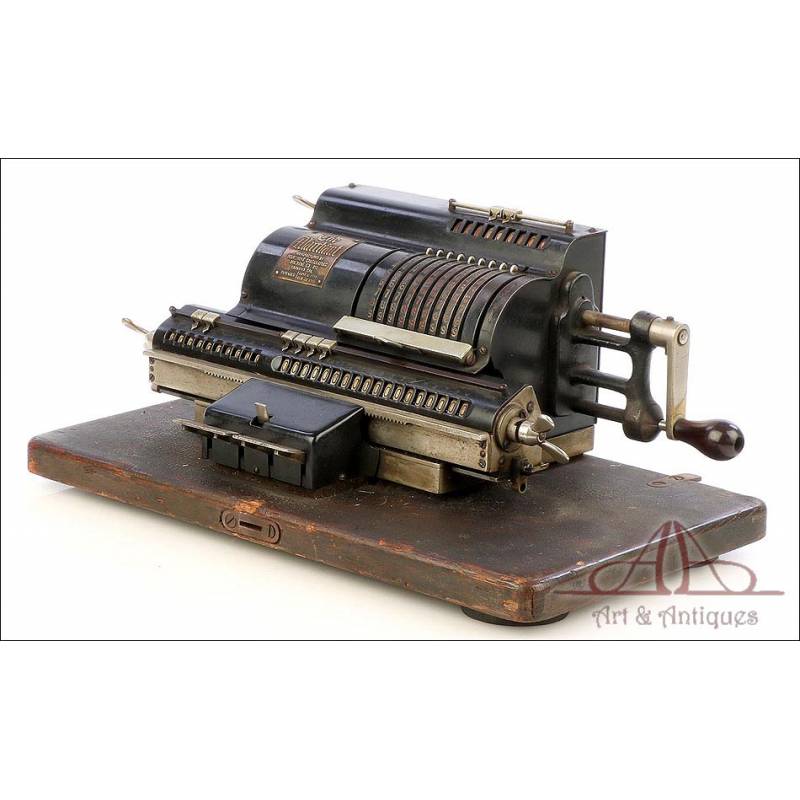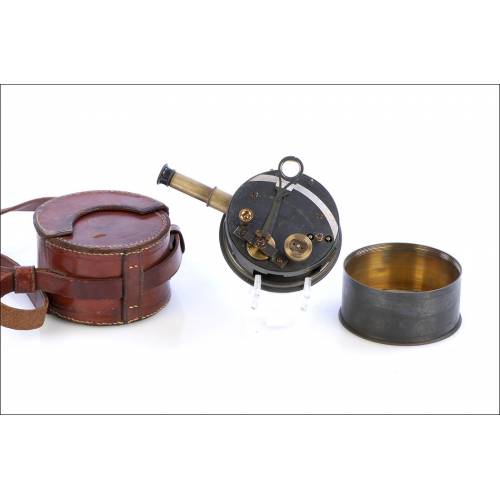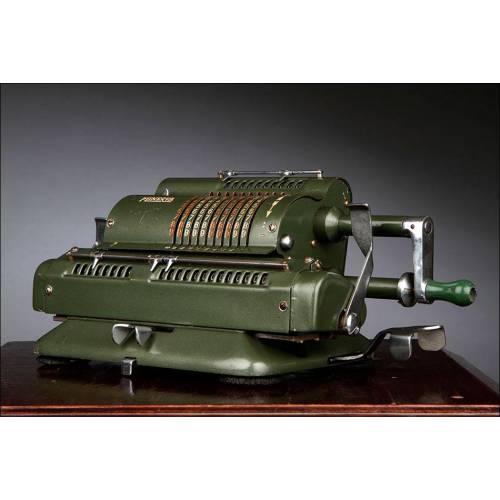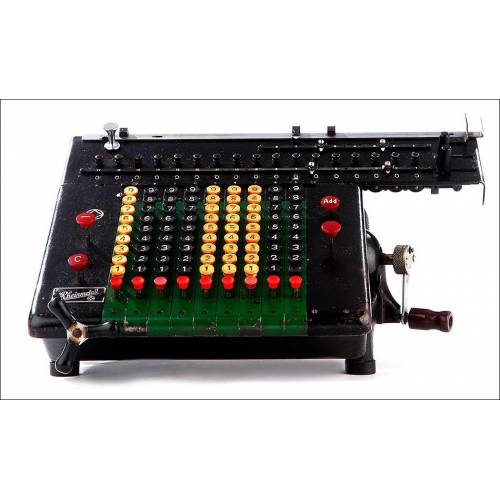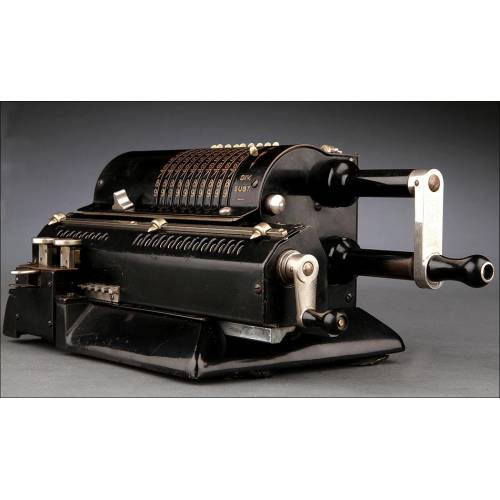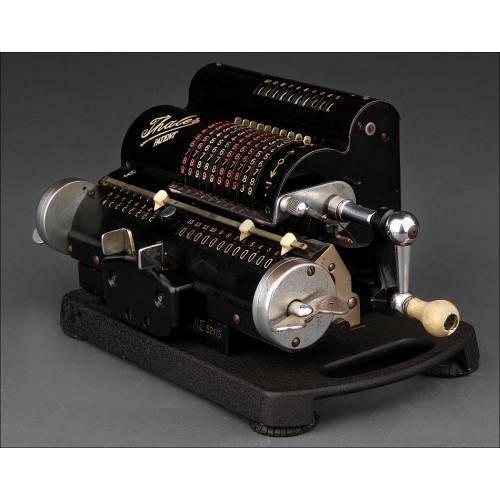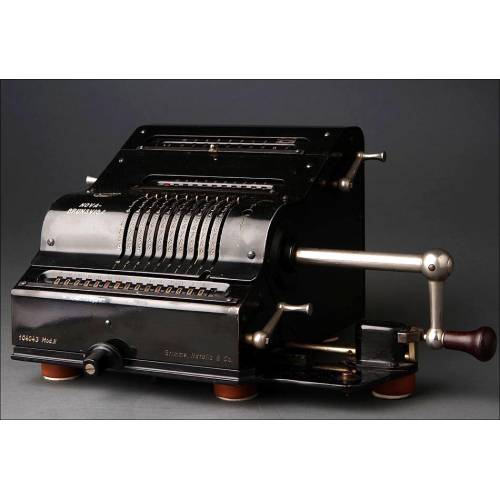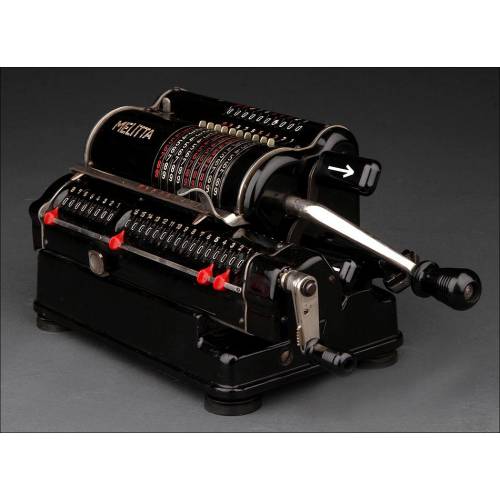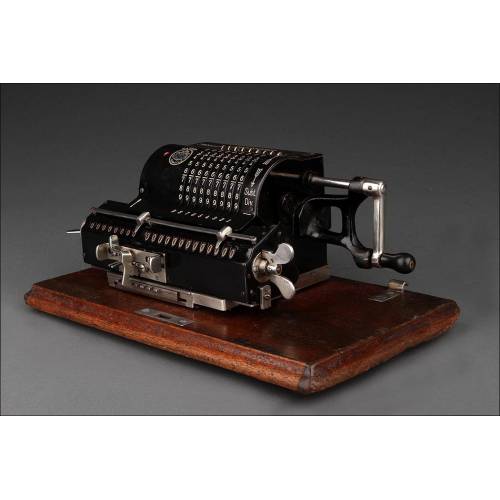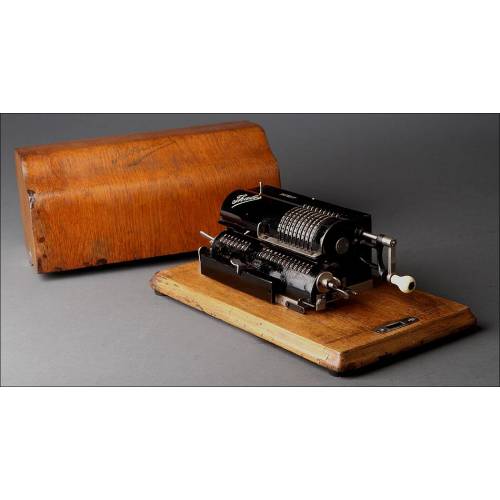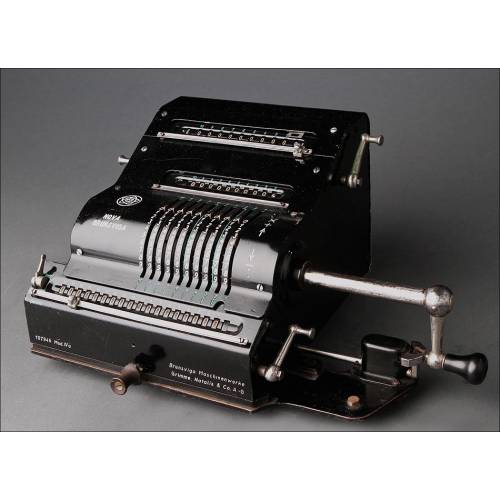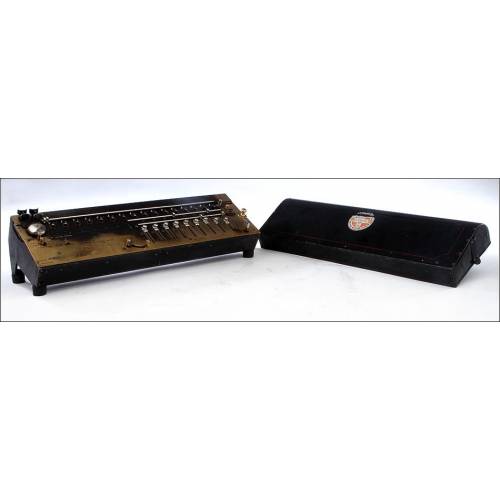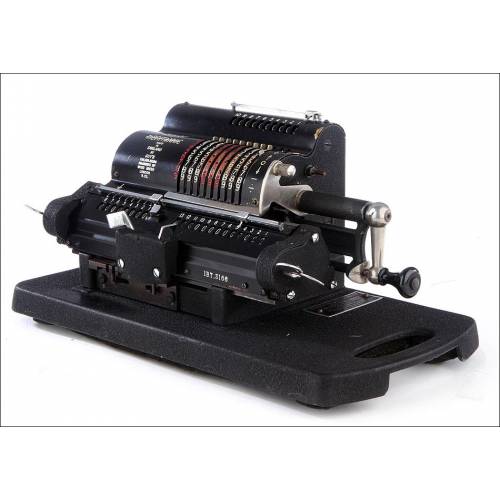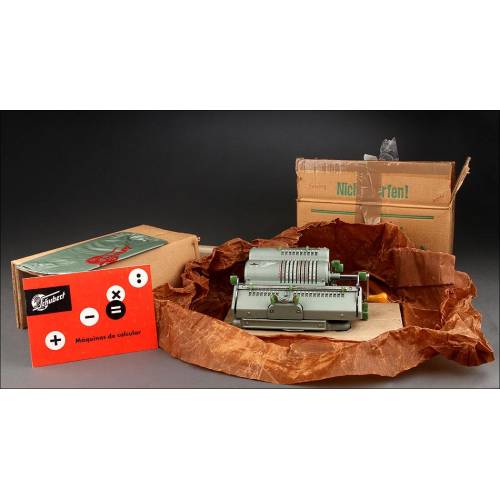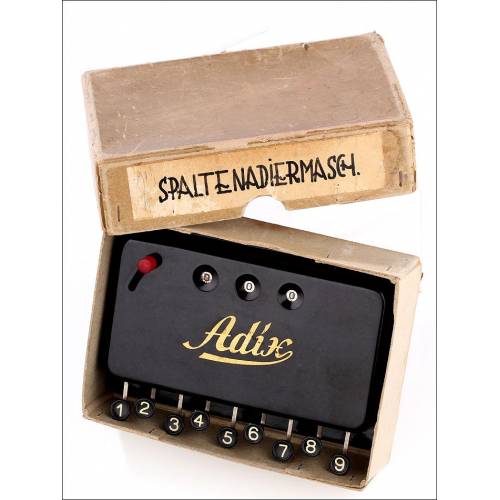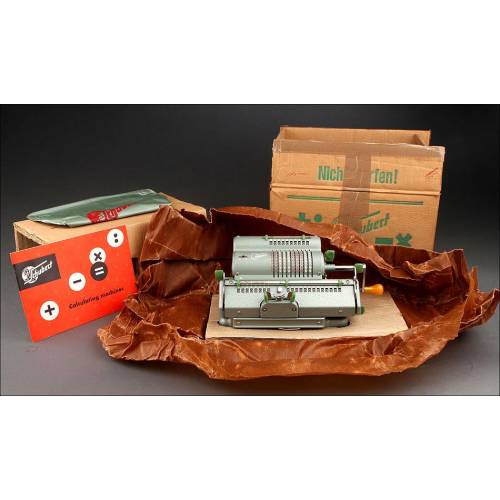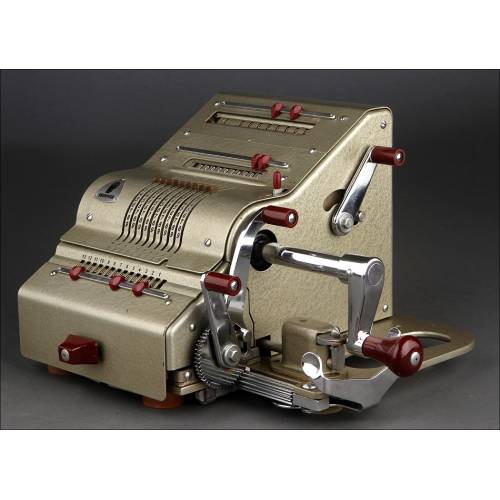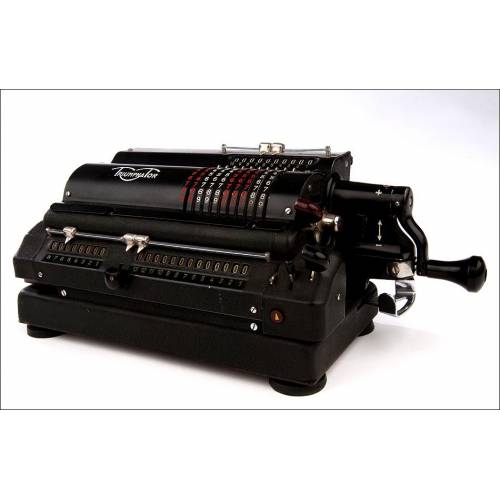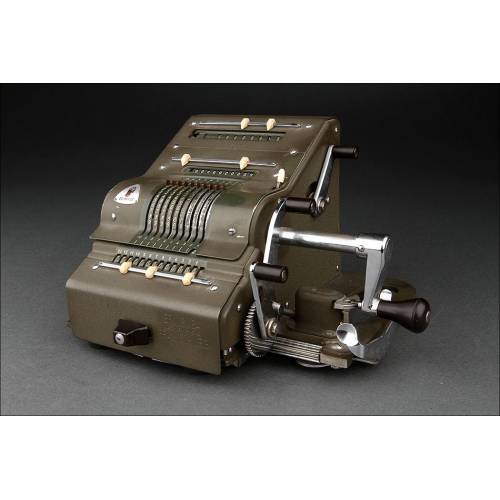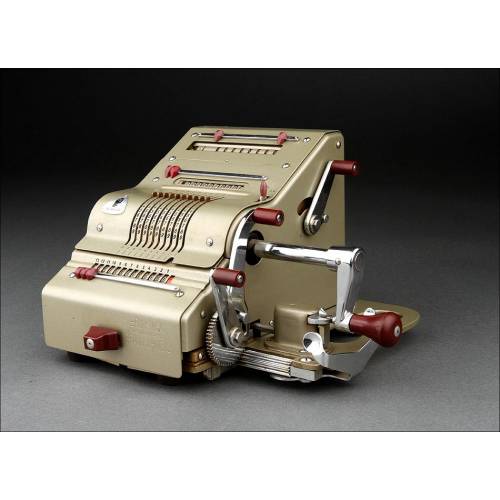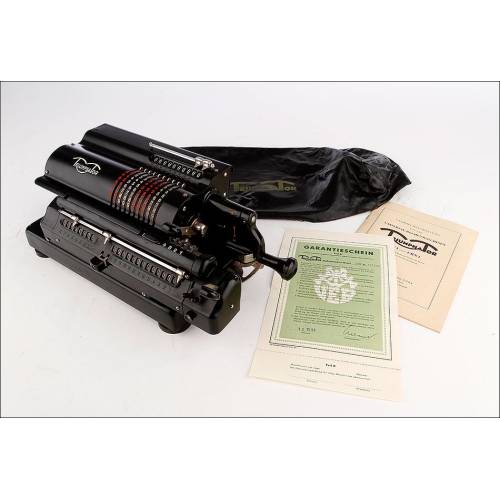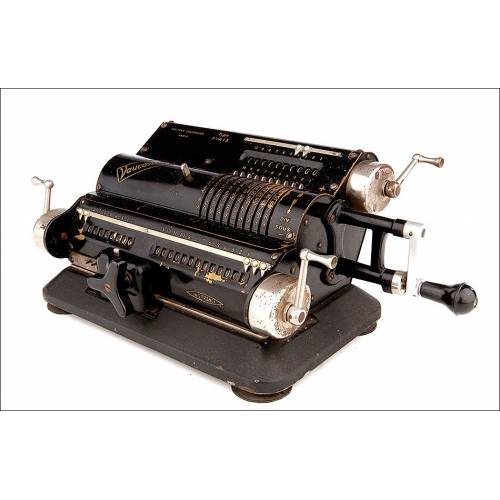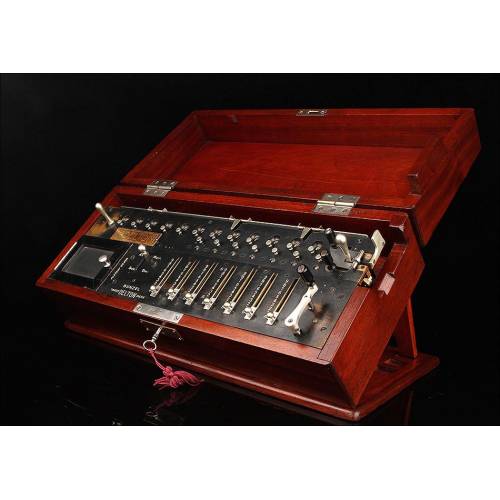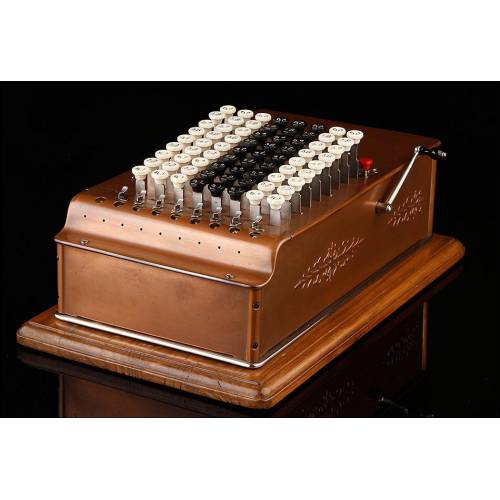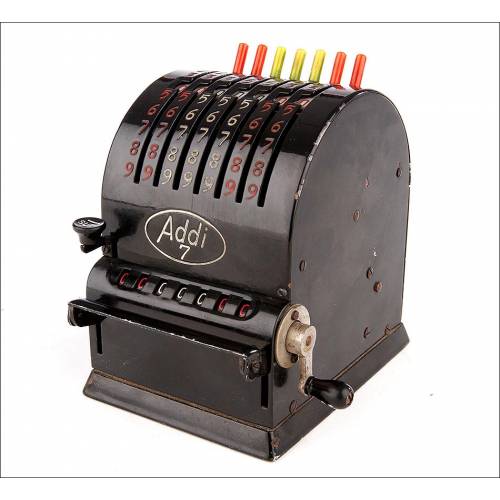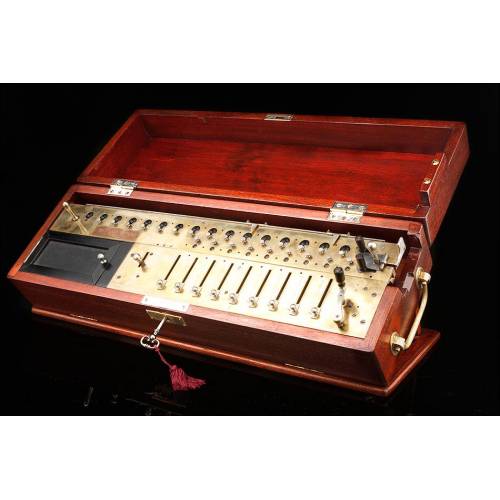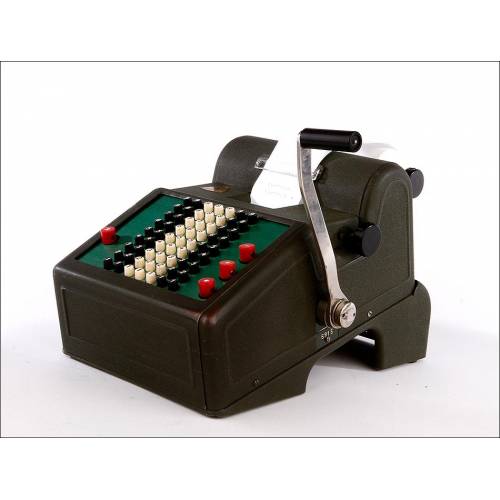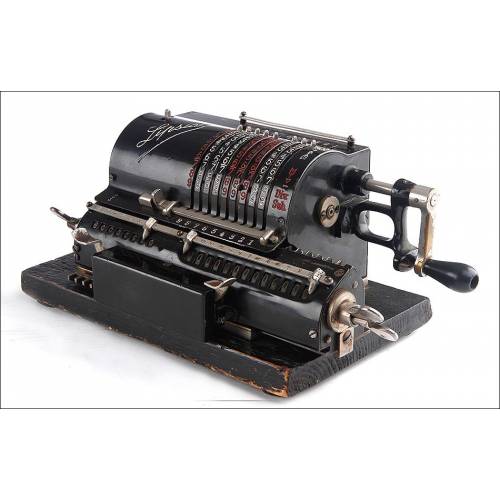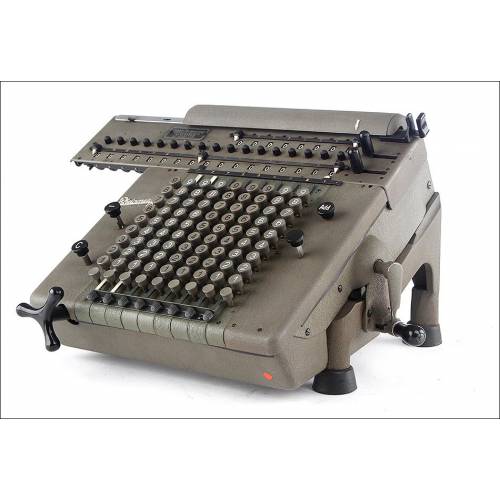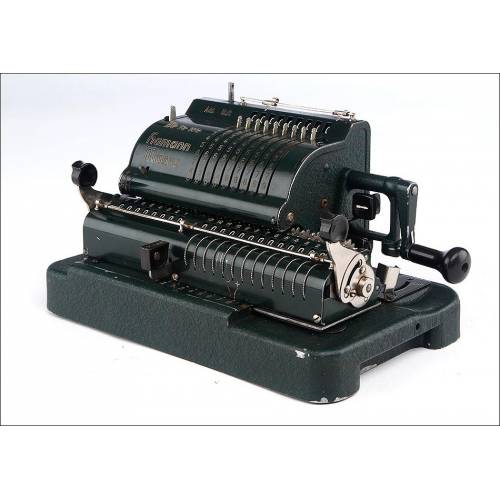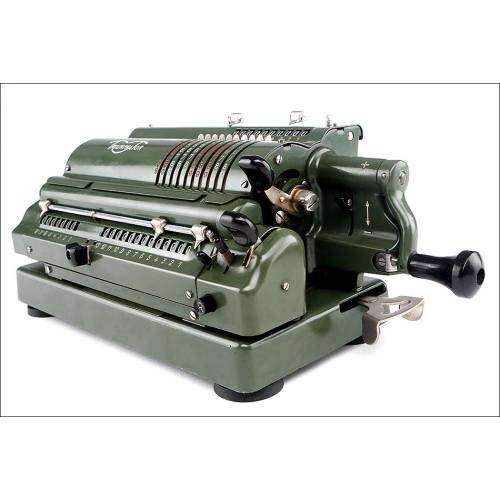C-972
Antique Marchant Mechanical Calculator. USA, Circa 1920
Great antique Marchant calculator in good working order. Very decorative and original from the 1920s. Charming and nostalgic.
Sold!
Antique Marchant mechanical calculator made in the USA circa 1920, in good condition and fine working order. The calculator shows off the evocative design of turn-of-the-century devices and mounts the classic pinwheel mechanism that makes it possible to perform the four basic arithmetic operations with perfect outcomes. The black-lacquered metal case is in good condition and boasts a nice patina acquired throughout the decades; this feature provides the item with a really special charm. Though it is really old, the mechanism works perfectly and the levers and cranks move softly. At the front of the calculators we can see a silvery-metal plate with the (THE MARCHANT) and the manufacturers name in embossed lettering. To the left of the plate, the digits are painted white and red and preserve the original paint. At the back of the machine we can see the serial number Nº 05609 engraved in the metal, perfectly legible. The calculator stands on the original solid wooden base, in good condition too and with the original finish. This antique Marchant mechanical calculator is a nostalgic and charming piece which remains in fine working order. Dimension: Base: 13.6 in / 34 cm. Depth: 7.6 in / 19 cn. Calculator: Top Width: 6.8 in / 17 cm. Carriage: 9.4 in / 23.5 cm. Height: 5.8 in / 14.5 cm.Marchant Calculators History The Marchant Calculating Machine Company was started in 1911 by the Marchant brothers, Rodney and Alfred, in California, USA. The business manufactured mechanical machines and devices; later they would also produce electromechanical calculators, which became quite popular for their reliability. The first models launched by the firms were similar to Odhners arithmometers. In 1918 one of the companys employees, Carl Friden, designed an innovative model to cope with patent changes. This calculator became a sales success and Friden became chief design of Marchant until 1934, when he left the company to start his own business. In 1958 the firm was acquired by the Smith-Corona Typewriter Company (SCM) as part of their diversification strategy. In 1965 the SCM tried to stay competitive by launching a new electronic calculator, but it was no good: the massive arrival of cheap electronic devices ruined the production.

